[5] Micro-organisms
1/21
There's no tags or description
Looks like no tags are added yet.
Name | Mastery | Learn | Test | Matching | Spaced |
|---|
No study sessions yet.
22 Terms
what are microorganisms
Microorganisms are tiny living organisms that are too small to be seen with the naked eye such as bacteria, fungi and algae
what are the conditions needed in a fermenter?
The temperature must be maintained at a level that is ideal for the growth of the microorganisms.
The pH must be controlled to ensure the optimal activity of the microorganisms.
The oxygen supply as aerobic fermentation is required for microorganisms such yeast and ethanol
The fermenter should be kept sterile to prevent contamination by unwanted microorganisms that could compete with the desired microorganisms or spoil the product.
Why is yeast used in beer making
Yeast ferments, which transforms the sugars in the malt into alcohol and carbon dioxide which gives the beer its alcoholic content and flavour
Why is yeast used in bread making
yeast produces enzymes that break down starch in the flour releasing sugars that can be used by yeast for anaerobic respiration
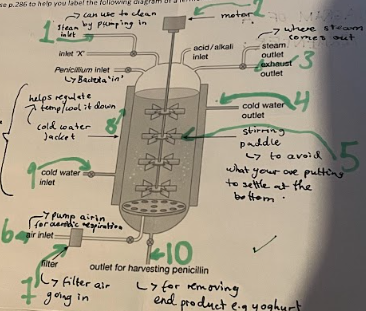
What is 1
Steam inlet
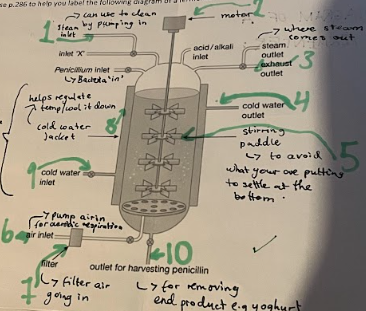
what is 2
motor
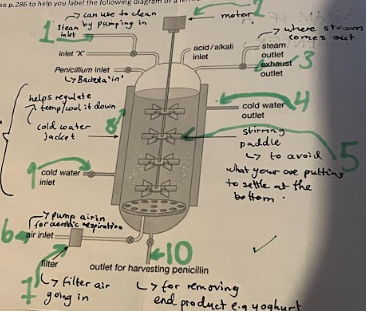
what is 3
steam outlet

what is 4
cold water outlet
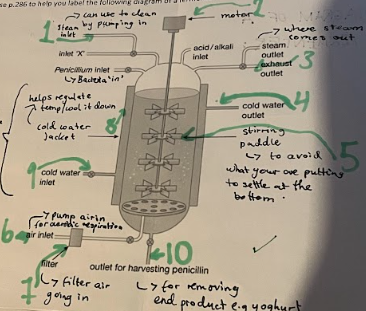
what is 5
stirring paddle to avoid what you are putting in settling at the bottom
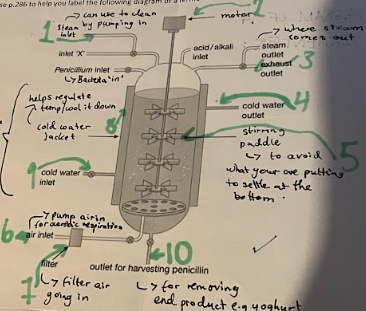
what is 6
air inlet for aerobic respiration
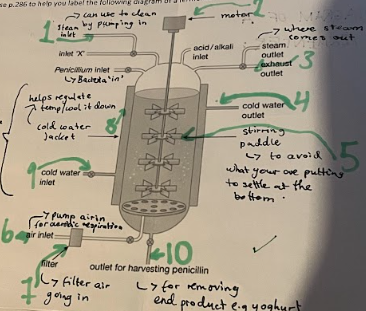
what is 7
filter to filter air coming in
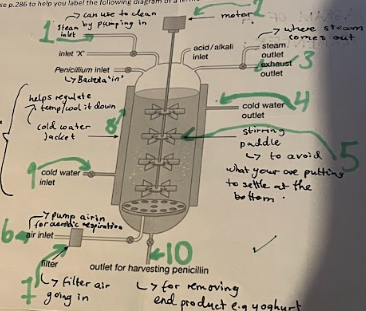
what is 8
cool water jacket to regulate temperature
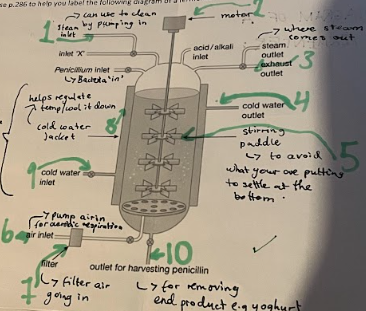
what is 9
cold water inlet
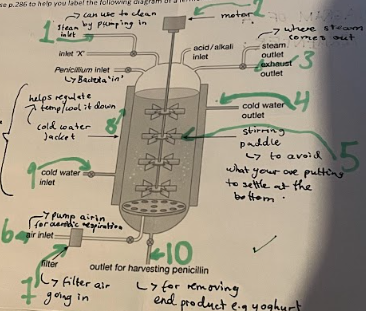
what is 10
outlet for removing end product
1) what investigation can you use to investigate the production of carbon dioxide by yeast under different conditions
2) why is the glucose solution boiled
1) two test tubes connected in a water bath, one containing yeast + sugar solution and liquid paraffin on top to stop oxygen coming through closed off with a rubber bung and connected with a delivery tube into a test tube with lime water you should measure the bubbles produced. repeat at different temperatures
2) to sterilize it and remove any oxygen
how are bacteria used in the production of yoghurt?
Lactobacillus ferment lactose (the sugar in milk) and covert it into lactic acid which is used to create the tangy taste and thick texture of yoghurt
What are food chains and webs
Food chains and food webs are concepts used to describe how energy and nutrients flow through ecosystems.
what is a pyramid of number
represent the number of organisms at each trophic level, they are usually not pyramid shaped
what are pyramids of biomass
show the total mass of the organism at each trophic level, always pyramid shaped
how does energy transfer along a food chain
Producers (photosynthesise)
Primary consumers (herbivores) eat producers and get energy.
Secondary consumers (carnivores/omnivore) eat herbivores for energy.
Tertiary consumers (omnivore) eat secondary consumers for energy.
Quaternary consumer (apex predator)
why is only only up to 10% of energy transferred
some energy is used by the organism for:
respiration
movement
reproduction
heat energy lost to the environment
excretion
some of the organism is not eaten like bones
some of the material is undigestible like fibre